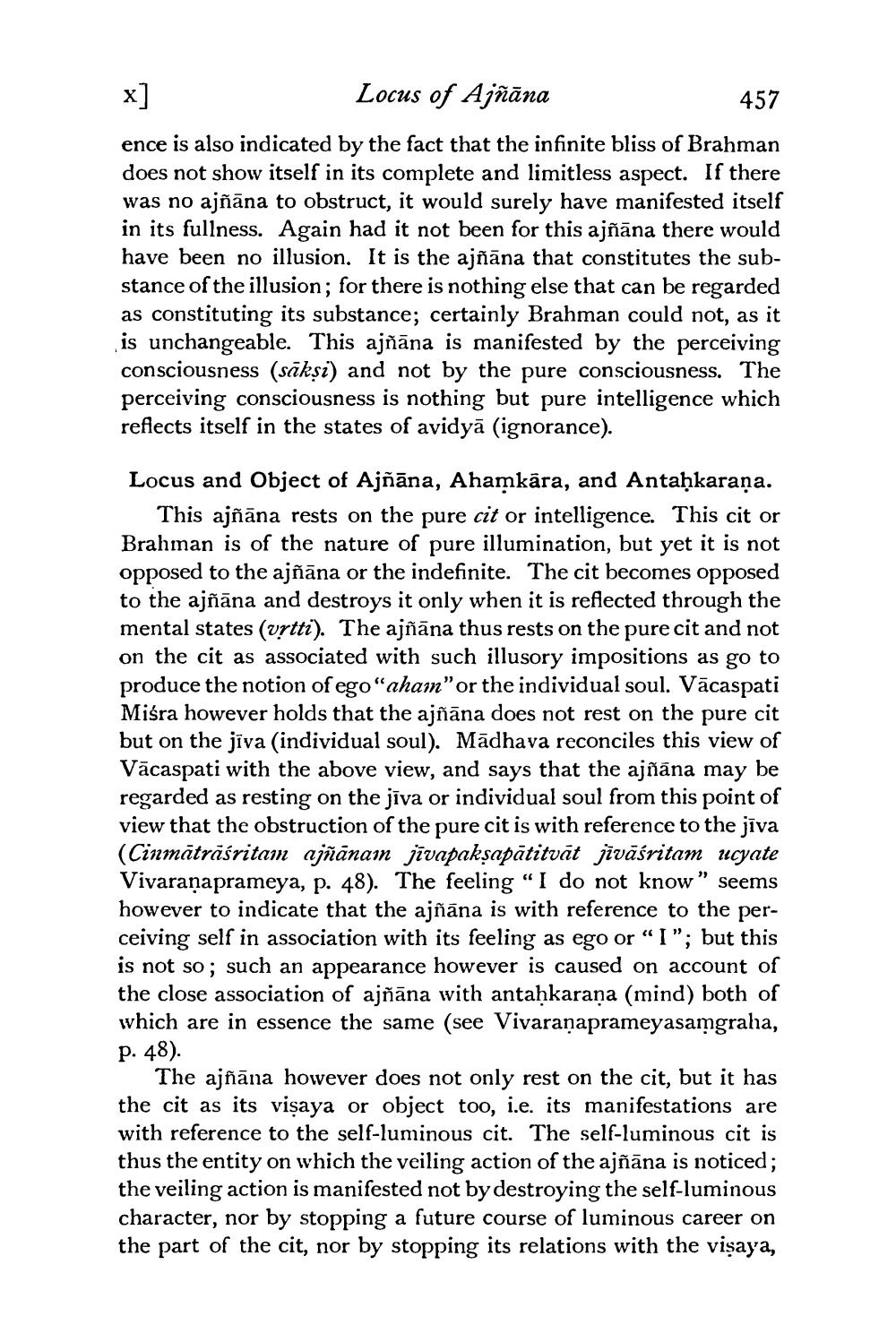________________
Locus of Ajñāna
457
ence is also indicated by the fact that the infinite bliss of Brahman does not show itself in its complete and limitless aspect. If there was no ajñāna to obstruct, it would surely have manifested itself in its fullness. Again had it not been for this ajñāna there would have been no illusion. It is the ajñāna that constitutes the substance of the illusion; for there is nothing else that can be regarded as constituting its substance; certainly Brahman could not, as it is unchangeable. This ajñāna is manifested by the perceiving consciousness (sākşi) and not by the pure consciousness. The perceiving consciousness is nothing but pure intelligence which reflects itself in the states of avidyā (ignorance).
Locus and Object of Ajñāna, Ahamkāra, and Antahkarana.
This ajñāna rests on the pure cit or intelligence. This cit or Brahman is of the nature of pure illumination, but yet it is not opposed to the ajñāna or the indefinite. The cit becomes opposed to the ajñāna and destroys it only when it is reflected through the mental states (vrtti). The ajñāna thus rests on the pure cit and not on the cit as associated with such illusory impositions as go to produce the notion of ego"aham" or the individual soul. Vācaspati Miśra however holds that the ajñāna does not rest on the pure cit but on the jiva (individual soul). Madhava reconciles this view of Vācaspati with the above view, and says that the ajñāna may be regarded as resting on the jīva or individual soul from this point of view that the obstruction of the pure cit is with reference to the jīva (Cinmātrāśritain ajñānain jīvapaksapătitvāt jivāśritam ucyate Vivaranaprameya, p. 48). The feeling “I do not know" seems however to indicate that the ajñāna is with reference to the perceiving self in association with its feeling as ego or "I"; but this is not so; such an appearance however is caused on account of the close association of ajñāna with antahkarana (mind) both of which are in essence the same (see Vivaranaprameyasamgraha, P. 48).
The ajñāna however does not only rest on the cit, but it has the cit as its visaya or object too, i.e. its manifestations are with reference to the self-luminous cit. The self-luminous cit is thus the entity on which the veiling action of the ajñāna is noticed; the veiling action is manifested not by destroying the self-luminous character, nor by stopping a future course of luminous career on the part of the cit, nor by stopping its relations with the vişaya,




